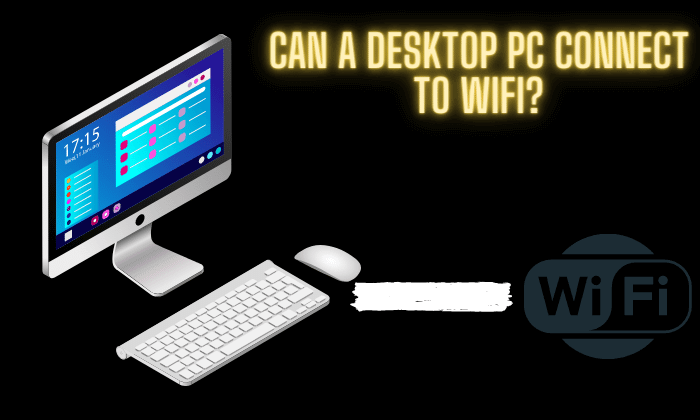Is it possible to share the wifi password between my laptop, mobile, and desktop?
This is possible – provided you have the right setup.
You’ll need a computer connected to the same wi-fi network, and the software for sharing between them is available. The Question of Can a Desktop PC connect to WIFI? is quite common.
If your computer is on the same network as a wireless access point, called an access point, then sharing the same password is simple – simply connect to the access point, enter your password, and it will automatically connect to your laptop or mobile when you’re away. Best PC Design Store is a platform that also explains computers.
You’ll need to create a new password each time your computer needs to connect to a new access point – a tap or a click on the computer’s Wi-Fi icon will let you do this.
If you’re connected to the internet via your broadband connection, then password sharing is also possible, just choose a new password whenever you want to access a network that requires a password.
By default, you’ll get a warning that sharing your password could leave your computer vulnerable, but if you just ignore that and click ‘OK’, it will remember the new password and remember it for the next time you need to use it. Can a Desktop PC connect to WIFI?
If you’re sharing your password from a mobile phone or tablet, then you’ll have to create a new one each time your device connects to an access point.
For a desktop, an access point is just an access point. The wireless modem doesn’t have to be connected to the internet – if you can get online via wi-fi, then you can access wi-fi access points.
If you’re not on wi-fi, then a network adapter connected to your router, a USB dongle, or a wireless card will usually connect to an access point. Can a Desktop PC connect to WIFI?
You can manually create a network connection using the ‘Network Settings’ in Windows, and choose ‘Wi-Fi’ as your wireless network connection type.
However, you may need to switch wireless networking to the physical network adapter connected to your computer.
The most common way to share the password is to install an access point – simply drag the access point icon from the toolbar of your web browser to the network you’re connected to. You can then log in to your account, and then click ‘Connect’ in the access point’s window.
The access point’s ‘VPN’ then connects to your laptop or mobile and automatically stores your login details, so you don’t need to type them in again each time you want to connect to another network.
As the ‘Network Settings’ toolbar icon is often greyed-out when you’re connected to an access point, you need to go to the network menu and select ‘Network > Advanced > Access Point’, and click ‘Create Access Point’.
If you’re using a desktop PC, the easiest way to do this is to hold down the Shift key while pressing ‘Ctrl’ and then selecting the Network Access Point option from the ‘Network menu’.Can a Desktop PC connect to WIFI?
Wi-Fi Passwords
While network shares are incredibly convenient, there are two big downsides:
If you forget the password – and you often do, particularly if you share the same wi-fi connection with several other devices – then you’ll need to reset your network. You can do this by going to your wi-fi device’s ‘Control Panel’ – or its ‘Network and Internet’ shortcut on your computer’s Start menu.
If you share a wi-fi network with more than one device, then you’ll also need to make sure it’s set up correctly. For example, you might want to make sure that your mobile phone, tablet, or laptop accesses the internet via the internet connection on your computer, rather than just using the wi-fi connection as a hotspot.
If you’re looking to make network sharing between computers more secure, then a firewall could help. You can install a firewall by right-clicking on your desktop, then selecting ‘Connect > Set Up Firewall’, and clicking ‘Next’.
You can choose to connect to your network using ‘SSID‘, or the ‘WPA2 Password’.
One of the big advantages of using a firewall is that it lets you choose the device that will access the internet via the network.
I try to explain to you Can a Desktop PC connect to WIFI?
If you’re using a hotspot, for example, you might be able to disable the internet connection from any device that isn’t your own.
But if you’re using a shared wi-fi connection, you’ll still need to share the password.
It’s also worth remembering that your network connection might be insecure, depending on your wi-fi network’s security settings.
If your connection isn’t protected with WEP encryption, then anyone on your network – even if they’ve already logged into your account – can see and use the data on your laptop or mobile, even if your password is protected by WPA2.
Many modern laptops and mobile phones now use WPA2-Personal (see Wireless Security for more details) or WPA2-Enterprise (see Wireless Security Enterprise for more details), which means they’ll be secure, but they do require a password to connect to your network.
Now, Can a Desktop PC connect to WIFI? is not difficult for you.
Hope You know the answer Now: Can a Desktop PC connect to WIFI?
For more information read: Gocooil

